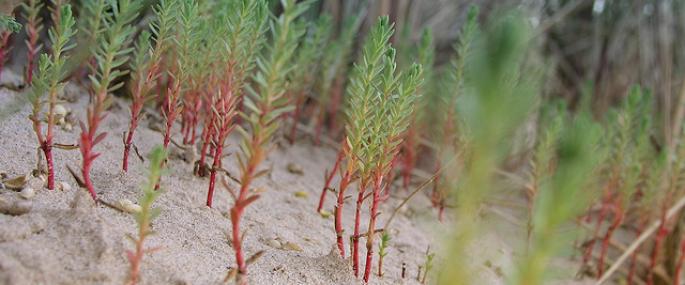Sea Spurge is a common plant of sand dunes and coastal areas, especially in southern England and Wales. It flowers between June and October and has fleshy leaves which help the plant retain water in the arid conditions in which it thrives. It is a popular plant among gardeners in coastal areas when creating salt-tolerant gardens and rockeries.
The Wildlife Trusts look after many coastal habitats for the benefit of all kinds of wildflowers, such as Sea Spurge, and are working closely with farmers, landowners and developers to promote wildlife-friendly practices in these areas. We have a vision of a 'Living Landscape': a network of habitats and wildlife corridors across town and country, which are good for both wildlife and people. You can support this greener vision for the future by joining your local Wildlife Trust.
